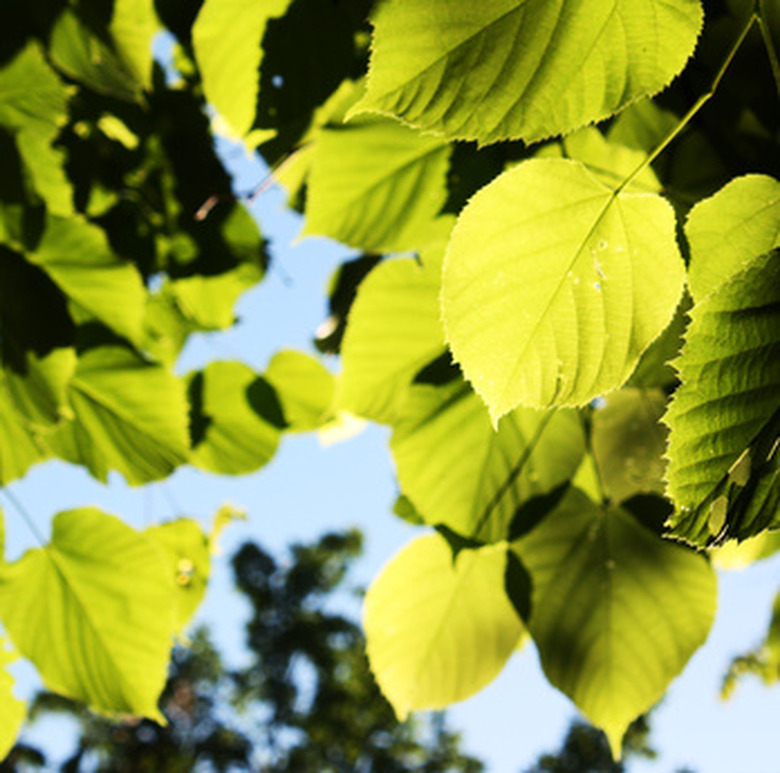How Does The Sun Affect Plants?
How does sunlight affect plant growth? Plant leaves collect energy from the sun, using this sunlight to produce their own food through the process of photosynthesis. While sunlight is essential for plants to thrive, different plants require various levels of sun, and there is such a thing as too much of a good thing. Bright sunlight on leaves can burn or bleach them, just as being on a beach for too long without sunblock can leave you with a sunburn. The sun affects plants in many other ways too, like the daily movement of sunflower heads following the sun.
Sunlight and Photosynthesis
Sunlight and Photosynthesis
What part of the plant absorbs sunlight? For the most part, the leaves of plants take in the most sunlight. The broad, flattened surfaces of leaves creates extensive surface area for collecting sunlight, and this is what leaves are designed to do.
The stems of plants create a rigid structure to keep leaves upright and allow for the most exposure to sunlight. The cells of plants contain the green pigment chlorophyll and organelles called chloroplasts, which are key ingredients for the process of photosynthesis.
Light energy is captured by chlorophyll, and this energy is used to convert carbon dioxide and water into sugars and oxygen. In other words, plants use energy they collect from the sun to produce food for themselves – and a byproduct of this process is that they create oxygen for humans and other animals to breathe.
The Right Amount of Light
The Right Amount of Light
Some plants are like Goldilocks from the fairy tale – they need just the right amount of light. Other plants are adaptable to different amounts of light, but all plants can suffer at some point from too little or too much light.
Gardeners come to learn the light requirements of different plant species through research and experimentation. Often, plants that are purchased from a nursery or garden center will come with a tag indicating the light preferences of the specific variety, using phrases like 'full sun' or 'part shade.'
Plants display a variety of symptoms when they are exposed to the wrong amount of light. Too little light can cause leaves to become pale from lack of chlorophyll. Or, too little light can cause plants to stretch out and become 'leggy' as they reach for the sun. Without enough sun, plants may start to lose their leaves, and lack of sunlight may also cause plants to conserve energy by not producing flowers.
On the other hand, too much sunlight may cause bleaching of leaves. Plants do have a mechanism called photoprotection to shield themselves from too much sun, but this only works to a certain extent. Extreme sunlight can cause cellular damage to plants and impair their photosynthetic productivity.
Reaching for the Sun
Reaching for the Sun
Even healthy plants that are exposed to ideal light conditions reach for the sun, a phenomenon known as heliotropism. Sunflowers are well-known for tracking the sun throughout the day, their heads slowly turning from east to west as the sun rises and sets.
Scientists have studied how this works and discovered that sunflowers are able to follow the sun each day through a unique process. During the day, the eastern side of the stem elongates to allow the sunflower head to rotate to the west. At night, the sunflower head returns to the east because the western side of the stem elongates.
Many other plants also follow the sun during the day, but few do so as dramatically as sunflowers, which is why they are so often associated with heliotropism. Plants that wrap around trellises, like climbing peas, also exhibit heliotropism. And most plants are phototropic, meaning that they will grow in a certain way in response to light – which is why it's important to rotate houseplants every now and then, so your plants don't become lopsided.
References
- University of Illinois – Realizing Increased Photosynthetic Efficiency: Cloudy Days Yost Yield Until Scientists Hacked Photosynthesis
- University of Minnesota Extension: Lighting for Indoor Plants and Starting Seeds
- University of California, Berkeley: How Sunflowers Follow the Sun
- Michigan State University: Too Much Sun is No Good – For People or Plants
Cite This Article
MLA
Sloane, Christina. "How Does The Sun Affect Plants?" sciencing.com, https://www.sciencing.com/how-does-the-sun-affect-plants-12330131/. 30 September 2021.
APA
Sloane, Christina. (2021, September 30). How Does The Sun Affect Plants?. sciencing.com. Retrieved from https://www.sciencing.com/how-does-the-sun-affect-plants-12330131/
Chicago
Sloane, Christina. How Does The Sun Affect Plants? last modified March 24, 2022. https://www.sciencing.com/how-does-the-sun-affect-plants-12330131/
